JATILUWIH RICE TERRACES BALI – The Complete Guide
The Jatiluwih rice terraces are one of the best rice terraces to visit in Bali with an incredible history. Located in the Tabanan regency near Gunung Batukaru, the Jatiluwih green land offers amazing views. With over 600 hectares of rice paddies following the flowing lush hillside of the Batukaru mountain range, the Jatiluwih rice terraces give a new meaning to the word green. The area is very rural with nothing but farming communities which makes visiting Jatiluwih rice fields a very authentic Bali experience. It is one of the places in Bali you have to see. In this blog post you will read about all the things you need to know when visiting the Jatiluwih rice fields. How to get there, the entrance fee, best time to visit and some background information about rice terraces in Bali.
Book here your 2 hour cycling tour to explore the Jatiluwih rice fields
All our photos are reserved for copyright. We don’t allow the usage of our pictures for informational or commercial purposes. If you want to use our pictures, you can buy a license. Contact us by email for more information to prevent legal problems.
General travel must haves for Bali
Before we dive into the things you have to know about the Jatiluwih rice fields, let’s check a few things to make your travels in Bali easy and safe.
Have you thought about how to get around in Bali? A scooter is the easiest way if you’re comfortable driving one yourself.
- Book your scooter or motorbike here to get around in Bali. This is the most convenient way to arrange your rental motorbike, especially because it gets delivered and picked up for free to your accommodation within Ubud, Canggu, Kuta, Nusa Dua, Denpasar, Seminyak, Uluwatu, Kerobokan, Jimbaran, Sanur. Requirements: 20 years old; international car (B) drivers license for scooters (or moto (A) license for motorcycles); copies of passport and drivers license.
Do you prefer a private driver for the day and the freedom to create your own itinerary?
Did you already book your accommodation?
Are you insured during your travels?
- Buy your travel insurance here. Safetywing not only includes coverage for travel delay, lost checked luggage, emergency response, natural disasters and personal liability. But also covers all your medical expenses for hospitalisation.
About Jatiluwih rice terraces
Jatiluwih is derived from two words. Jati means “real” and Luwih means “good” or “beautiful”. So even in the local language the name Jatiluwih means beautiful. With incredible vast panoramas, you can see the Batukaru mountains and Mount Agung and Mount Abang on a clear day offering spectacular views.

The Bali rice fields are famous for its terraced layout which is a traditional Balinese irrigation system known as Subak Irrigation system. This traditional water management dates back to the 9th century and exemplifies the Balinese philosophical principle of Tri Hita Karana. Translated this basically means the “three causes of happiness and harmony in human’s life” which involves the relations between human and God, human and fellow human beings and human and nature. With the strong belief in God and showing appreciation in the Bali temples, providing rice for people and keeping the nature clean and in tact, the Bali rice terraces are a beautiful example of this Balinese philosophical principle.
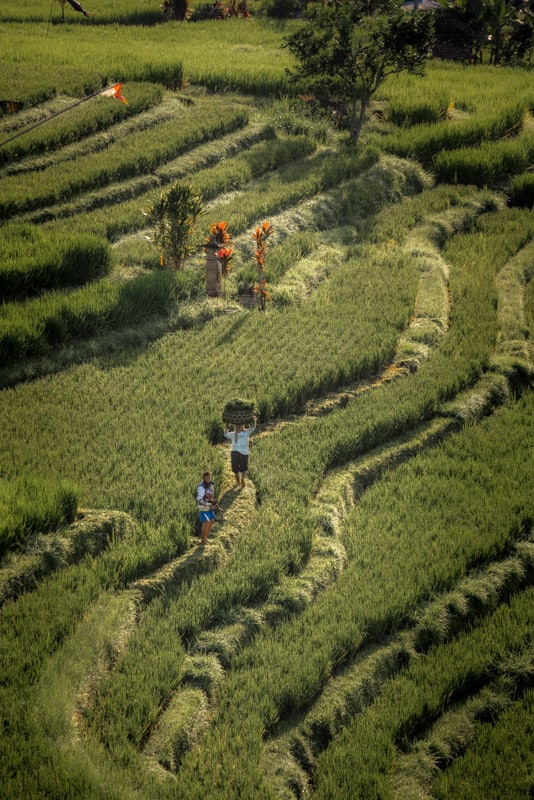

History about rice production in Indonesia
Rice production inIndonesia is a very important part of the national economy. It has been part of the Balinese culture for at least two thousand years. Indonesia is the third-largest producer of rice in the world and everywhere you go in this country, rice fields shapes the landscape. What makes Jatiluwih rice terraces so special is that it is an UNESCO World Heritage and the only place in the world that has three annual rice harvests.
Before I continue to tell more about the Jatiluwih rice terraces, I want to share some background information and history about rice production in Indonesia.
The rice cycle is a process which takes in total 5 months. Just before planting the new rice, the fields have to be fertilised which is done by flooding them with water and cows or machines plowing the land.

The fields then look like reflecting mirrors and are ready for planting. This is done by hand over several days. The little seeds are reflecting in the silvery water and are ready to grow. This takes two months after planting the rice before they have grown taller into green rice and are ready to harvest. After harvesting, the stubble in the fields are burnt or flooded, so that the old rice stalks slowly decompose under the water and the ground is being prepared for the next rice.

What to expect at the Jatiluwih rice terraces
A visit to the Jatiluwih rice terraces in Bali is a perfect day trip. The cool air, beautiful views and local life of the farmers is something intriguing and shows you what Bali really is about. You can spend half a day or even a full day exploring the Jatiluwih rice terraces. There are many hiking paths and viewpoints. But even for a quick stop, it is worth it to put Jatiluwih rice fields on your Bali itinerary. You can either combine it with the other things to do in the area, like exploring NungNung waterfall and Leke Leke waterfall. Or if you’re on your way to the Northern region of Bali this is a great stop.
You can explore the beautiful rice terraces of Jatiluwih Bali in different ways. You can overlook the rice terraces from the viewpoint if you are short in time. But if you have some hours left, you can hike through the rice fields to see more of the surroundings. You’ll get to explore different parts of the Bali rice terraces, jump over rivers, and even sit down for a nice lunch in the terraces. Moreover, there are beautiful mountains in the area, small villages to explore, and great local restaurants.

Along the street overlooking Jatiluwih rice fields you can find a number of restaurants and cafes offering great coffee, food and drinks with some of the best views in Bali you can imagine. This is a great spot for lunch or to grab a coffee right after you explored the rice paddies.

Jatiluwih rice terraces entrance fee
The entrance fee for Jatiluwih rice terrace is 40,000 IDR per person. Besides that you pay an extra 5,000 IDR for the car park.
How to get to the Jatiluwih rice terraces
Your options to get to the Jatiluwih rice terraces are driving there yourself, hiring a private driver, or taking one of the many Bali tour packages.
The ride from Ubud to Jatiluwih rice terraces takes about 80 minutes and from Canggu it takes about the same time. The entrance is easy to find and the road towards the rice fields is well maintained.


Best time to visit Jatiluwih rice terraces
If you are planning to visit Jatiluwih, the best time to get there is early in the morning. For photographers a sunrise mission to the rice fields is highly recommended. Facing east, the Jatiluwih rice terraces are filled with golden light once the sun comes over the horizon. And if you’re lucky you can even see Mount Agung and Mount Abang in the distance. Later in the midday there is a chance that clouds cover the mountains.

If you’re not a sunrise person but still want to enjoy the rice fields in a peaceful way, you should arrive here around 8:00 AM until 10:00 AM. Usually the area will be busier with tourists during lunch hours.
Afternoon time is not the best time to visit this place because clouds may cover the beautiful scenery of the mountains.
In terms of the best season you should take the harvest seasons into account. You don’t want to visit the Jatiluwih rice terraces after harvesting because then the rice fields in Bali look like mud pools. So you can better ask a local or check instagram stories on the Jatiluwih location to make sure that the rice fields are green!
Generally, the best months to enjoy the natural scenery of Jatiluwih rice terraces are from February until April, May and between September and November. During these months the rice stalks are starting to grow. And depending on your timing you will be able to witness the green-yellow carpets of rice terraces. The earlier in the season you visit, the smaller the rice will be. During June – July (called Sasih Sada), you will be able to see farmers harvesting their crops on site. This results in mud pool in the month after which makes August the worst timing to visit.

Things to do around Jatiluwih rice terraces
After you’ve explored the Jatiluwih rice terraces it is time to continue your journey through Bali. Depending on the area you want to go next, here a few suggestions:
- Visit the Ulun Danu Bratan during this tour to North Bali including other awesome spots
- Visit NungNung waterfall and Leke Leke waterfall
- Go rafting and explore Bali’s jungle
- Visit Tegalalang rice terraces in Ubud
More Bali travel inspiration
We hope you enjoyed reading this travel guide about the Jatiluwih rice terraces.
For more Bali travel tips and inspiration, read these blogs:


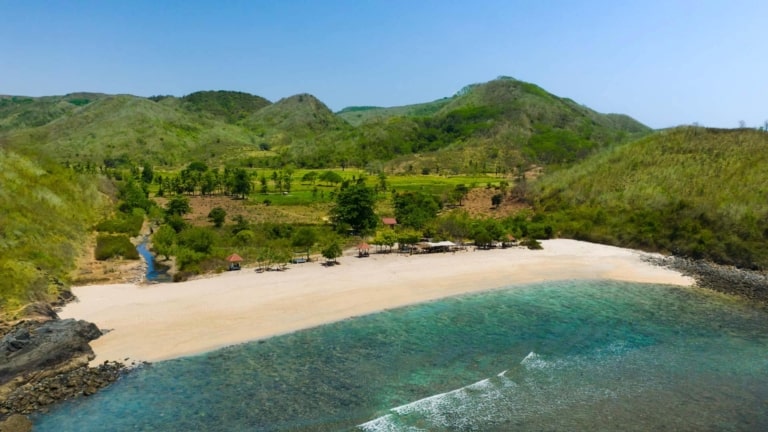
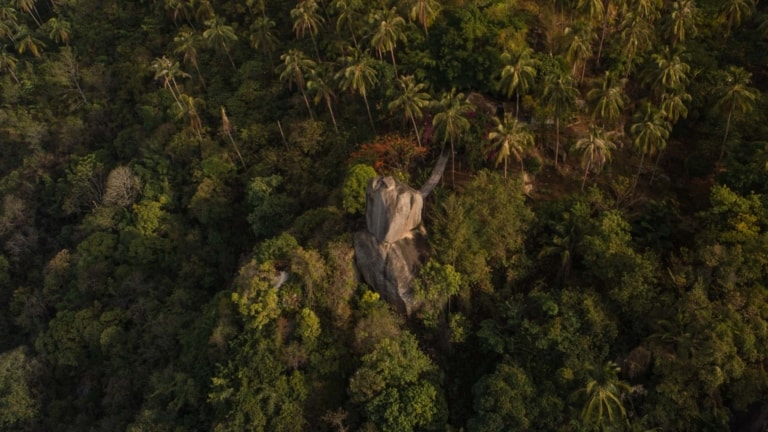
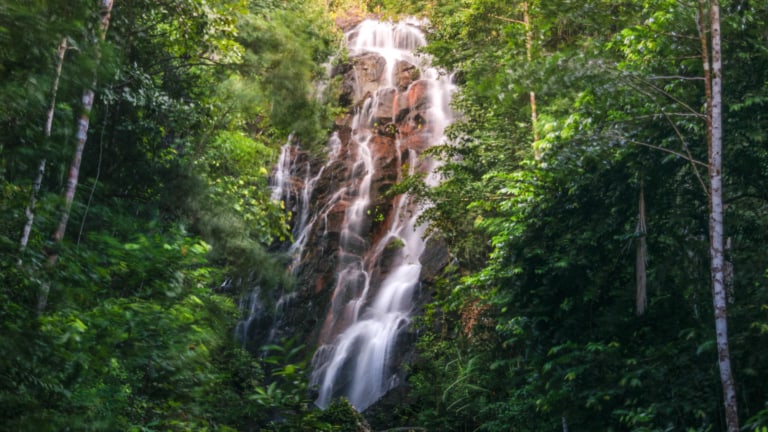

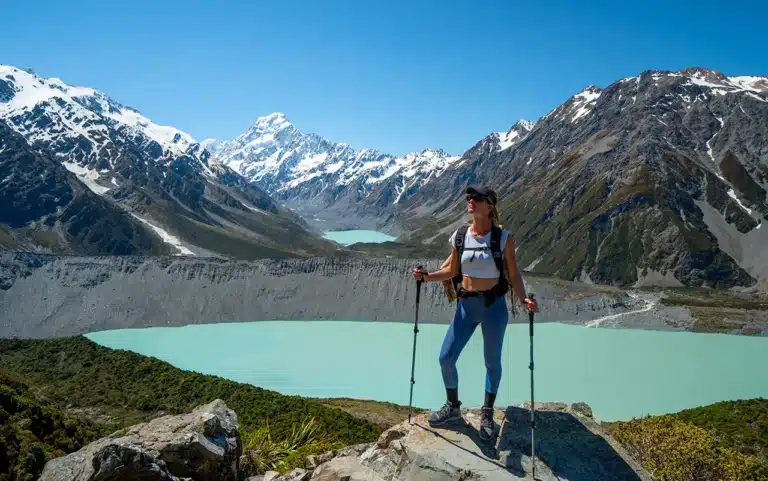
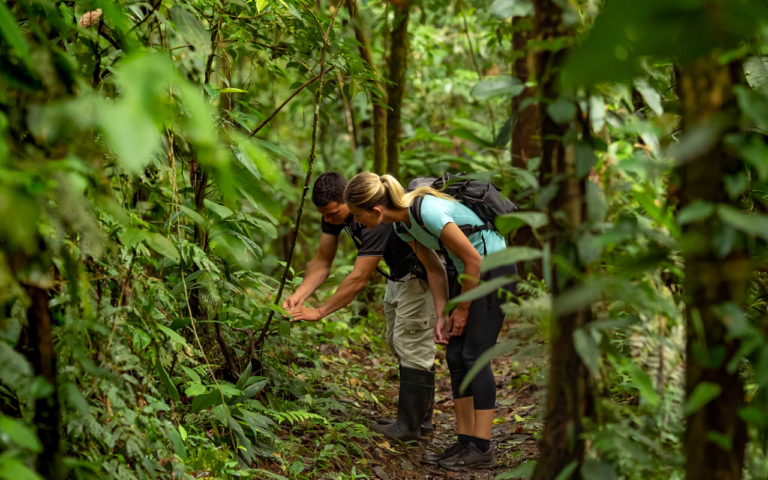
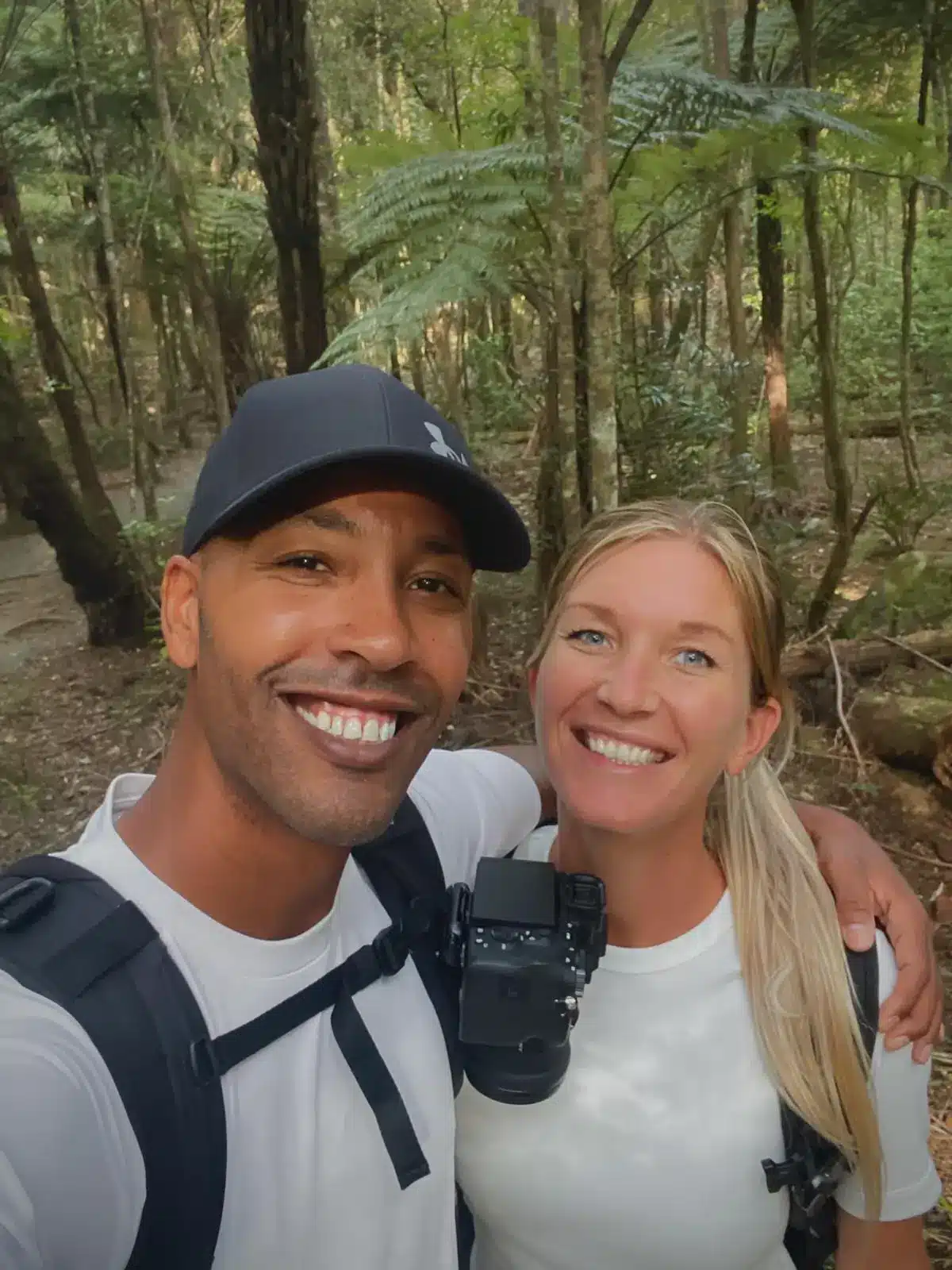
Hi Ilse! Thanks for the in-depth info – the photos look amazing. Can I confirm with you that the Jatiluwih rice terraces are open at sunrise? Based on what I can see online, they don’t open until 8AM.
Hi! Thanks a lot for your comment. Yes, I can 100% confirm to you that the rice fields are open with sunrise. There is no fence that opens, you can just walk in for your sunrise photo or morning walk. On the way you might be asked to pay the entrance fee. Have fun!! Ilse
Hi ILse and Atiba, wow, we love the new lay-out of your website, well done 👍😍. The Jatiluwih rice terraces look beautiful, thanks for your info and beautiful pictures 👌
Thanks so much for your kind comment! Happy to hear 😀